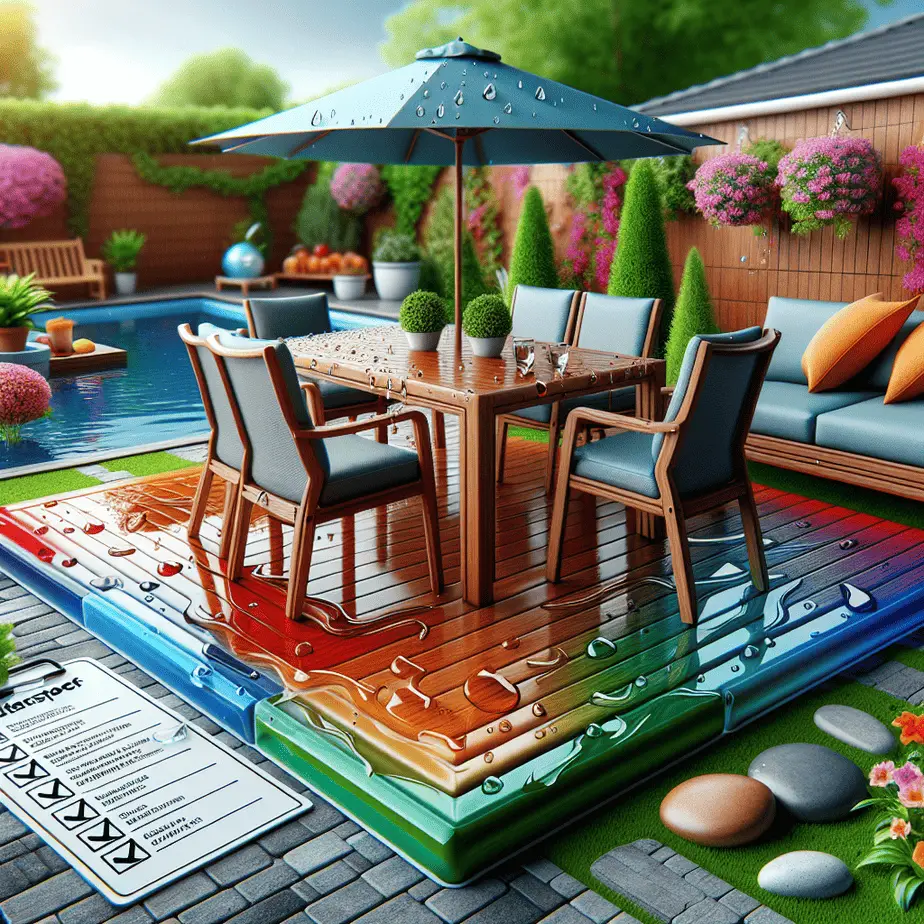Is Outdoor Furniture Waterproof? (And How to Tell)
When it comes to outdoor furniture, the assumption often is that because it’s outside, it must be waterproof, right? Well, not necessarily. In this article, we are diving deep into the world of outdoor furnishings to help you understand the differences in weather resistance, how to tell if your outdoor furniture truly can stand up to the elements, and what you can do to protect your investment.
Understanding Weather Resistance in Outdoor Furniture
Firstly, it’s important to understand that there’s a difference between ‘waterproof’ and ‘water-resistant’. Waterproof implies that water cannot penetrate the material at all, an absolute barrier to moisture. Water-resistant, on the other hand, means that an item will resist the penetration of water to some degree but not entirely.
Most outdoor furniture is water-resistant rather than waterproof. This is due to the fact that completely sealing furniture from water can often lead to other issues, like trapping condensation and creating a breeding ground for mold and mildew.
Materials such as polypropylene and teak are highly water-resistant and are commonly used in outdoor furniture. They can withstand rain showers and the occasional splash, but prolonged exposure to water can eventually seep through, or cause damage in other ways.
How to Tell If Your Outdoor Furniture Is Waterproof
Look at the Label: When purchasing furniture, look for labels that specify the furniture’s capabilities. Terms like ‘all-weather’, ‘weatherproof’, or ‘waterproof’ are indicators, but be sure to ask for further specifics or read the product description in detail.
Examine the Fabric: For upholstered pieces, outdoor fabrics are usually made to be water-resistant. Fabrics like Sunbrella are popular for outdoor use due to their ability to repel water. However, just because the fabric is water-resistant doesn’t mean the cushions they cover are too, so it’s worth checking whether the entirety of the product can handle moisture (Sunbrella Fabrics).
Inspect the Construction: Well-constructed outdoor furniture will oftentimes have features like sloped surfaces, or gaps which allow water to run off or evaporate. Pay attention to these little details, as they can tell a lot about how well the furniture will handle exposure to rain.
Maintaining Your Outdoor Furniture
Regardless of whether your furniture is labeled water-resistant or not, protecting your outdoor furnishings from the elements will extend their longevity and keep them looking great. Here are some maintenance tips:
- Store Cushions When Not in Use: Even if the fabric is water-resistant, it’s always best to store cushions inside or in a deck box when not in use to prevent waterlogging and mold growth.
- Use Furniture Covers: This is arguably one of the most effective ways to protect your outdoor furniture from all types of weather. Make sure to choose covers that have a breathable panel to prevent condensation.
- Regular Cleaning: Dust and dirt can retain moisture and encourage the growth of mildew. Regularly wiping down your furniture can prevent this issue.
- Sealant and Protectant Application: For wooden furniture, applying a sealant can add a layer of moisture protection. Metals might benefit from protectants to prevent rust.
Wrapping Up
So is outdoor furniture waterproof? Not entirely. But with the right knowledge and care, you can ensure that your outdoor living area remains both beautiful and functional, rain or shine. Always remember to evaluate the materials, construction, and manufacturer’s advice when assessing your outdoor furniture’s resistance to water. With proactive maintenance, you can create an outdoor space that you’ll enjoy for years to come.
Water-resistant doesn’t mean forever, and waterproof doesn’t mean it doesn’t need love. Your outdoor furniture requires a bit of TLC to thrive – much like the plants in your garden. Speaking of gardens, stay tuned for our next article on creating a watertight gardening toolkit, because if there’s anything a gardener hates, it’s soggy tools! Until then, may your garden be lush and your furniture dry.


